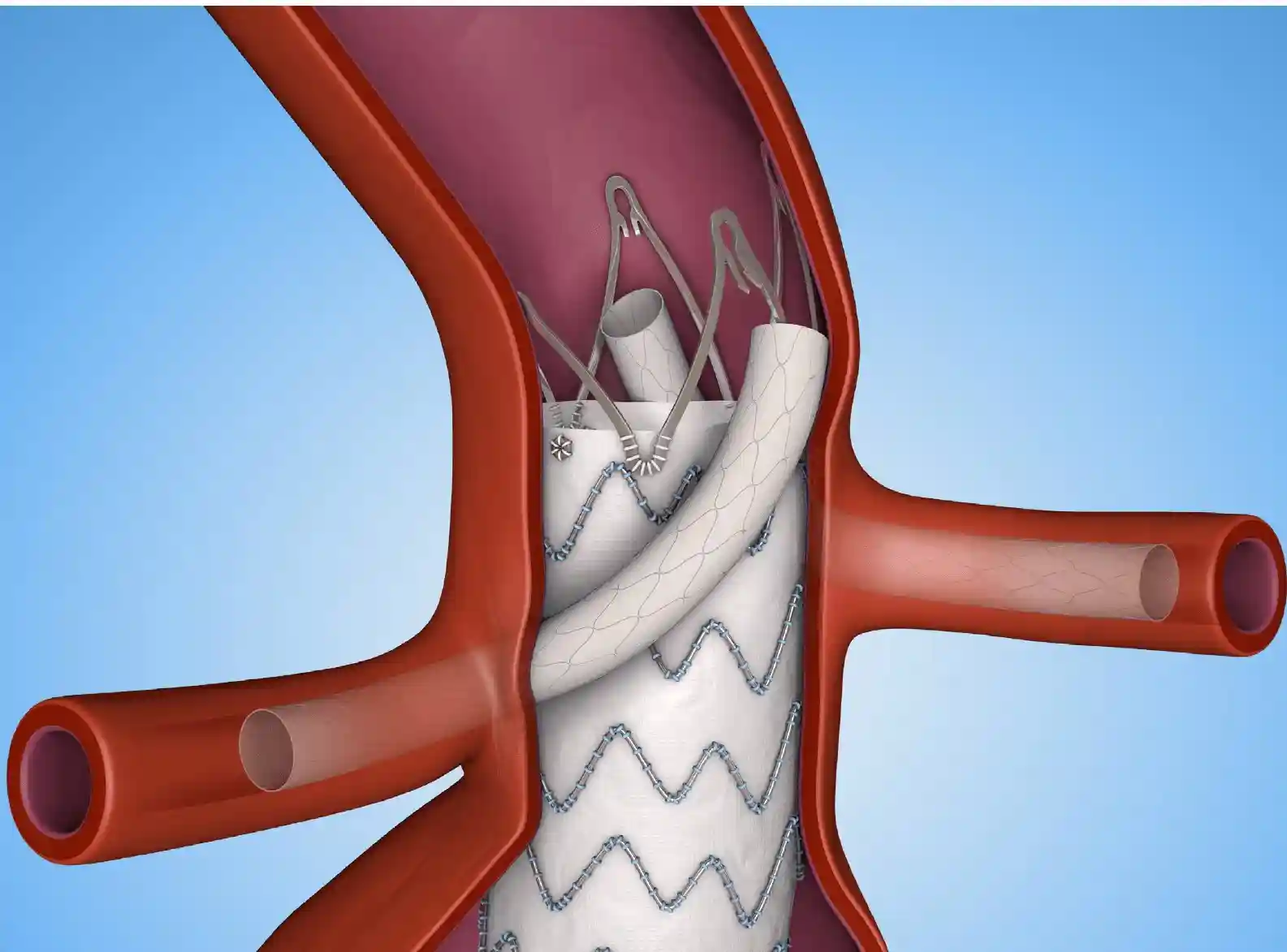Chimney Endovascular Aortic Repair (CHEVAR)
A Comprehensive Guide to Procedure, Benefits, and Risks

What is CHEVAR?
Chimney Endovascular Aortic Repair (CHEVAR) is an advanced minimally invasive technique designed to treat complex aortic aneurysms that involve branch arteries, such as the renal or mesenteric arteries. The procedure uses additional stents, known as "chimneys," alongside the main stent graft to ensure continued blood flow to vital branches while addressing the aneurysm.
Key Differentiators
- Allows treatment of aneurysms near vital arteries without open surgery
- Chimney stents maintain blood flow to branch vessels
- Highly customizable to individual patient anatomy
- Minimally invasive with reduced recovery time
Indications for CHEVAR
CHEVAR is indicated for patients with:
- Juxtarenal Aneurysms: Located near the renal arteries
- Thoracoabdominal Aneurysms: Spanning both the thoracic and abdominal aorta
- Failed Prior Repairs: Patients with prior open or endovascular procedures
- Anatomical Constraints: Where standard EVAR is not suitable
How is CHEVAR Performed?
The CHEVAR procedure involves the following steps:
- Preoperative Planning: Imaging studies to map the aneurysm and surrounding arteries.
- Access: Small incisions in the groin or arms to access the femoral and brachial arteries.
- Stent Placement: Deployment of the main stent graft and chimney stents to ensure blood flow to branch arteries.
- Alignment: Careful positioning of stents using advanced imaging.
- Closure: Sealing of all access points and confirming stent stability.
Benefits of CHEVAR
- Minimally invasive alternative to open surgery
- Preserves blood flow to critical branch vessels
- Shorter hospital stays and faster recovery
- Customizable to match patient-specific anatomy
- Effective in treating complex aneurysms
Risks and Complications
Potential risks of CHEVAR include:
- Endoleak: Persistent blood flow into the aneurysm
- Chimney Stent Misalignment: Improper positioning of branch stents
- Blood Clots: Formation of clots near stent grafts
- Kidney Function Issues: Related to temporary blood flow changes during the procedure
- Infection: Rare but possible at incision sites
Recovery After CHEVAR
Key aspects of recovery include:
- Monitoring in the hospital for 1-3 days
- Gradual return to normal activities within 2-3 weeks
- Regular imaging follow-ups to assess stent graft and aneurysm stability
- Medications to control blood pressure and prevent complications
Conclusion
CHEVAR is a cutting-edge option for treating complex aortic aneurysms involving branch arteries. Its minimally invasive nature and ability to preserve vital blood flow make it a valuable solution for patients with challenging anatomical conditions, ensuring improved outcomes and quality of life.